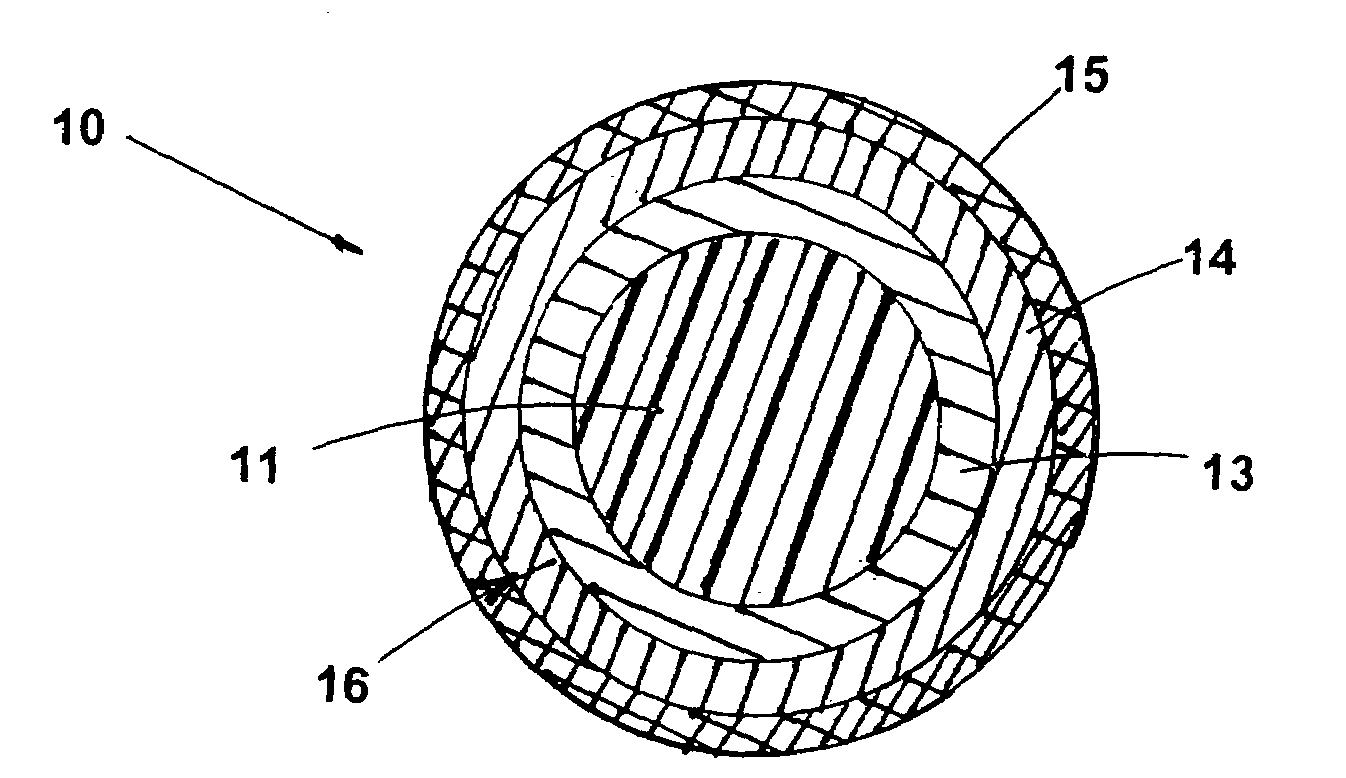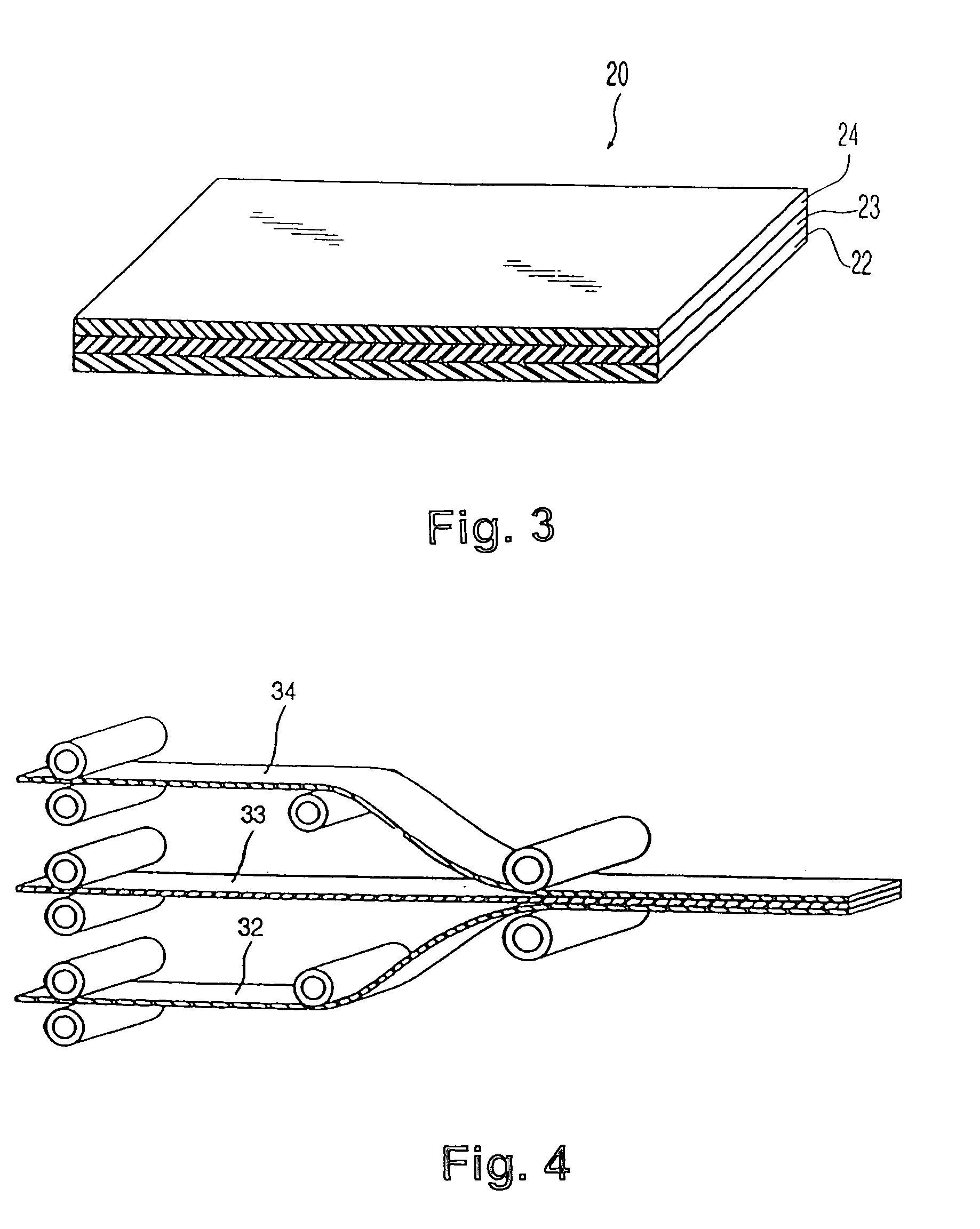Multi-layered core golf ball
- Summary
- Abstract
- Description
- Claims
- Application Information
AI Technical Summary
Benefits of technology
Problems solved by technology
Method used
Image
Examples
Embodiment Construction
[0032]Referring to FIGS. 1 and 2, golf ball 10 includes a core 16 and a cover 15. Core 16 includes a center 11, and at least one core layer. FIG. 1 depicts an embodiment of the invention having two outer core layers, an intermediate core layer 13 and a relatively rigid outermost core layer 14. However, FIG. 2 describes an embodiment having five core layers. They are: a first intermediate core layer 17a, a second intermediate core layer 17b, a third intermediate core layer 17c, a fourth intermediate core layer 17d, and a fifth core layer which is generally very rigid, also referred to as the outermost core layer 14.
[0033]Referring to FIG. 2, the center 11 is preferably formed by compression molding a sphere from a prep of center material. Compression molding solid centers is well known in the art.
[0034]Referring to FIGS. 3 and 4, in order to form multiple layers around the center in a first embodiment of the invention, preferably a laminate 20 is formed. The laminate 20 is comprised ...
PUM
| Property | Measurement | Unit |
|---|---|---|
| Thickness | aaaaa | aaaaa |
| Pressure | aaaaa | aaaaa |
| Pressure | aaaaa | aaaaa |
Abstract
Description
Claims
Application Information
 Login to View More
Login to View More - R&D
- Intellectual Property
- Life Sciences
- Materials
- Tech Scout
- Unparalleled Data Quality
- Higher Quality Content
- 60% Fewer Hallucinations
Browse by: Latest US Patents, China's latest patents, Technical Efficacy Thesaurus, Application Domain, Technology Topic, Popular Technical Reports.
© 2025 PatSnap. All rights reserved.Legal|Privacy policy|Modern Slavery Act Transparency Statement|Sitemap|About US| Contact US: help@patsnap.com



